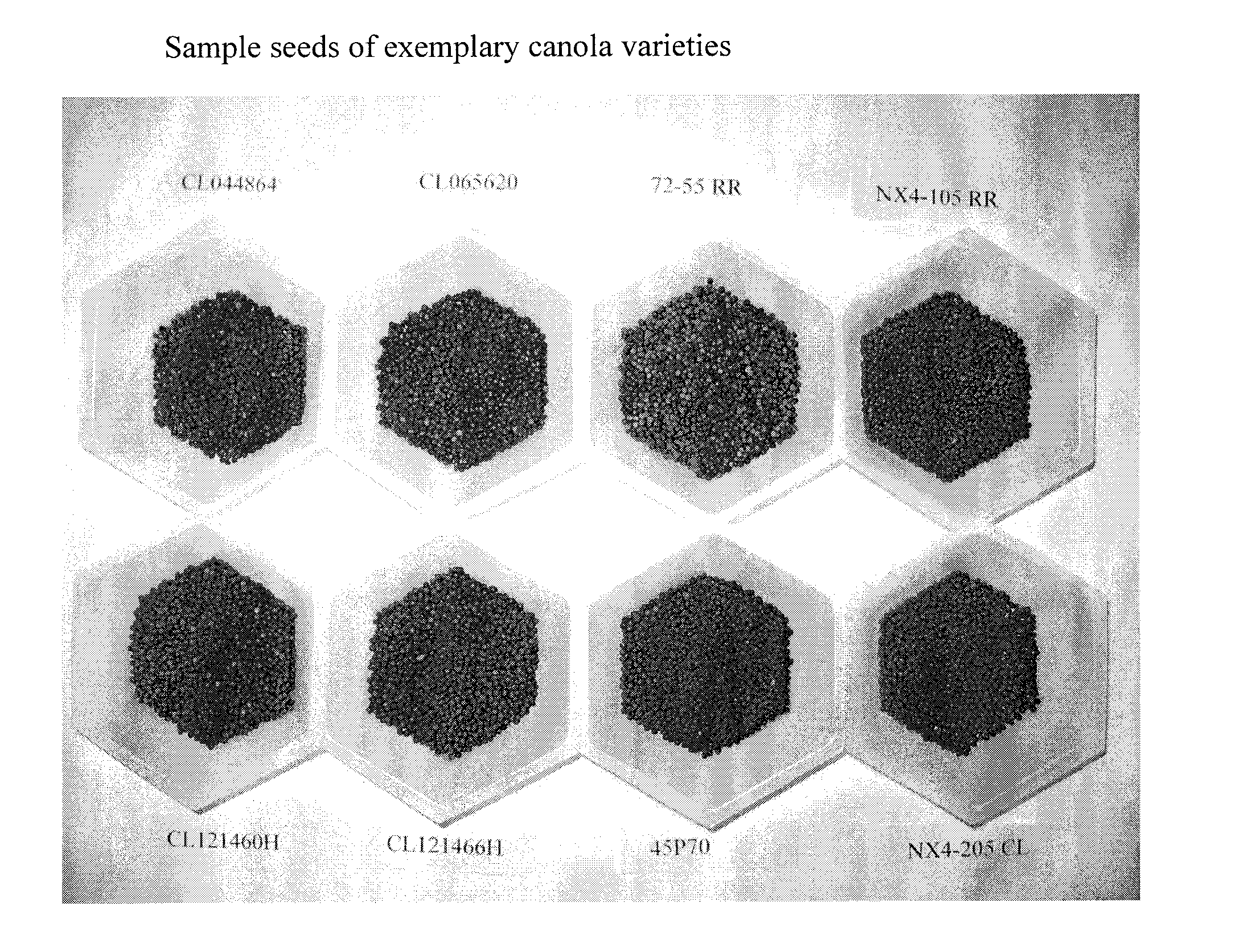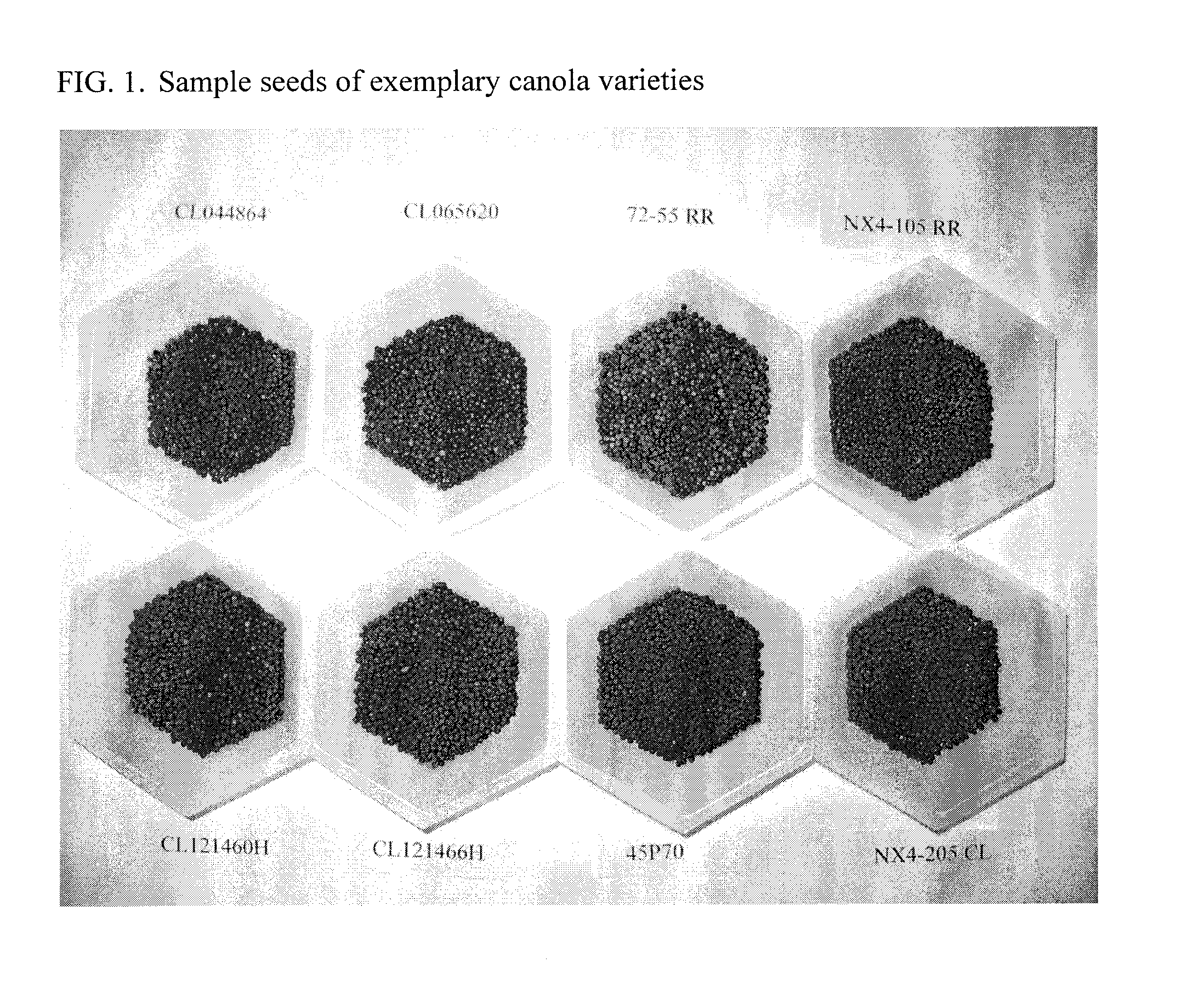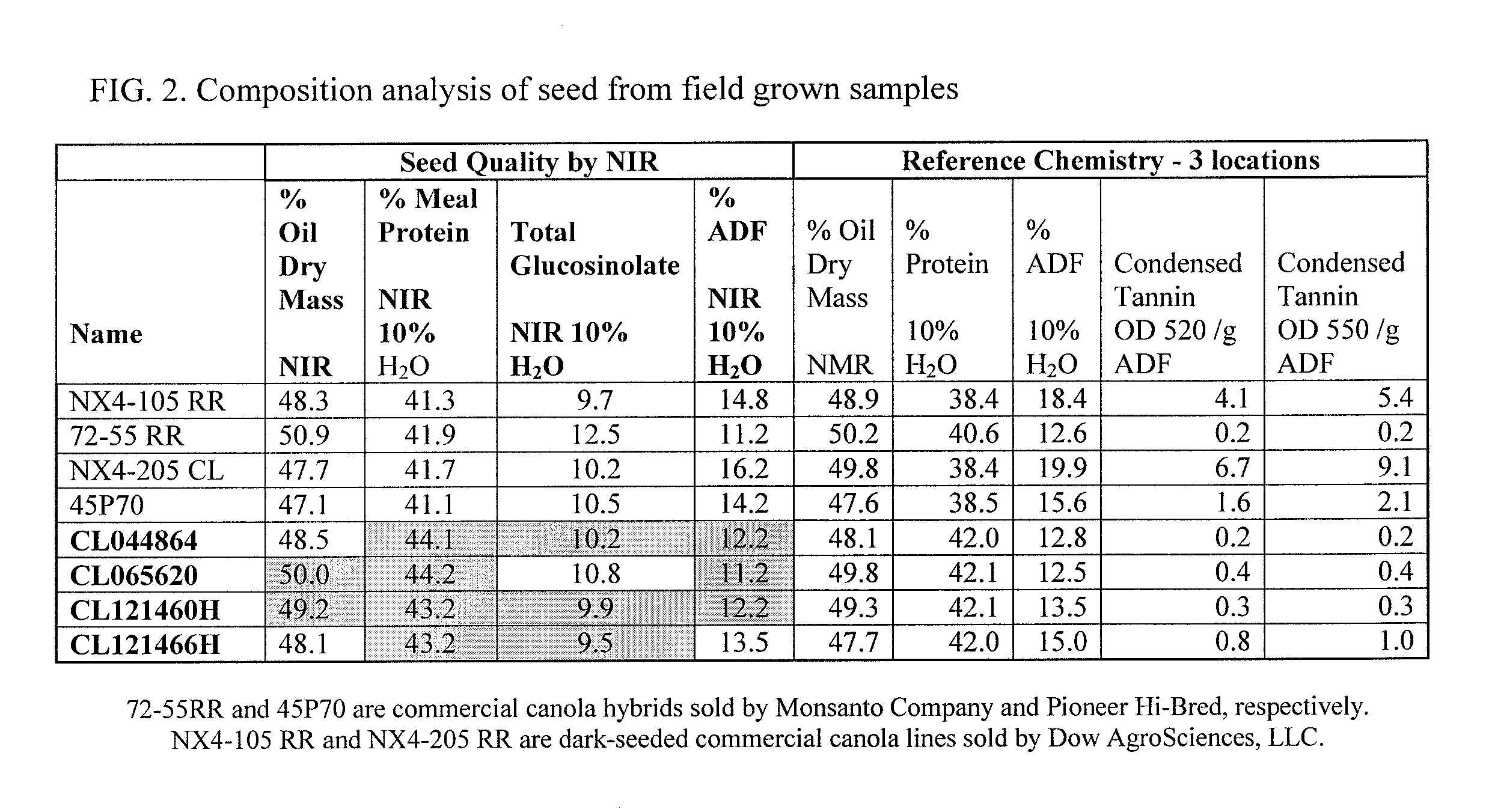Canola Germplasm Exhibiting Seed Compositional Attributes That Deliver Enhanced Canola Meal Nutritional Value
a technology of canola germplasm and composition attributes, which is applied in the field of canola germplasm and cultivars, can solve the problems of reducing the digestibility and value of the meal, glucosinolates in some canola meals, and low value of the meal relative to other oilseed meals, so as to improve enhance the nutritional value of the canola meal
- Summary
- Abstract
- Description
- Claims
- Application Information
AI Technical Summary
Benefits of technology
Problems solved by technology
Method used
Image
Examples
example 1
Average Nutrient Composition and Value of Enhanced Canola Meal (EMC) and Conventional Canola Meal
[0106]Several analytical and functional studies were conducted between 2009 and 2012 to assess the nutrient composition and value of ECM lines and hybrids of the present invention. Testing was conducted on whole unprocessed seed, partially processed meal and fully processed meal to account for possible processing effects on nutritional composition and value. Samples were analyzed at the Universities of Illinois, Missouri, Georgia and Manitoba. This compositional information was used to estimate the energy value of enhanced canola meal versus conventional canola meal using standard prediction equations. Biological evaluation of the samples for poultry energy and amino acid digestibility were done at the Universities of Illinois and Georgia. Biological evaluation of the samples for swine energy and amino acid digestibility was conducted at the University of Illinois. The summary nutrient c...
example 2
POS White Flake (WF), LT and HT Meal Processes
[0109]ECM seed and conventional canola seed were processed at the POS Pilot Plant in Saskatoon, Calif. according to the following procedures:
Materials
[0110]Approximately 1.5 MT of the ECM test line (CL44864) canola seed was received at POS on Aug. 2, 2011. Approximately 3.0 MT of commodity control canola seed was received at POS on Aug. 3, 2011. Sources for major materials follow.
Hexane / iso-hexane: Univar, Saskatoon, SK.
Hyflo Super-cel Filter Aid: Manville Products Corp., Denver, Colo.
Nitrogen: Air Liquide, Saskatoon, SK.
[0111]Filter Cloth, monofilament: Porritts and Spensor, Pointe Claire, PQ.
Filter Paper, 55 lb tan style 1138-55: Porritts and Spensor, Pointe Claire, PQ.
Methods—Pilot Plant Processing
[0112]Between each canola variety, all equipment in the “Primary” processing plant was vacuumed or swept clean. Inflammable, the extractor was not shutdown in between trials. However, the extractor chain, Schnecken and solvent recovery syste...
example 3
Indianapolis White Flake Process
[0136]Canola seed of the present invention may be processed to produce canola white flakes using the procedure originally described in Bailey's Industrial Oil & Fat Products (1996), 5th Ed., Chapter 2, Wiley Interscience Publication, New York, N.Y.
[0137]To extract oil from the canola seed, the canola seed is first flaked by coffee grinding and heat treated in an oven to 85° C.±10° C. for at least 20 minutes. After heat treatment, the ground seed is pressed using a Taby Press Type-20A Press (Täby Skeppsta, Örebro, Sweden). The resulting presscake from the Taby Press is solvent extracted to remove any remaining residual oil.
[0138]Presscake from the oilseed pressing step is then solvent extracted to remove and collect any remaining residual oil. The presscake is placed into stainless steel thimbles which are placed into a custom made Soxhlet™ extractor from LaSalle Glassware (Guelph, ON). Hexane may be used as the extraction solvent and the Soxhlet™ extr...
PUM
| Property | Measurement | Unit |
|---|---|---|
| amino acid digestibility | aaaaa | aaaaa |
| amino acid digestibility | aaaaa | aaaaa |
| diameter | aaaaa | aaaaa |
Abstract
Description
Claims
Application Information
 Login to View More
Login to View More - R&D
- Intellectual Property
- Life Sciences
- Materials
- Tech Scout
- Unparalleled Data Quality
- Higher Quality Content
- 60% Fewer Hallucinations
Browse by: Latest US Patents, China's latest patents, Technical Efficacy Thesaurus, Application Domain, Technology Topic, Popular Technical Reports.
© 2025 PatSnap. All rights reserved.Legal|Privacy policy|Modern Slavery Act Transparency Statement|Sitemap|About US| Contact US: help@patsnap.com



